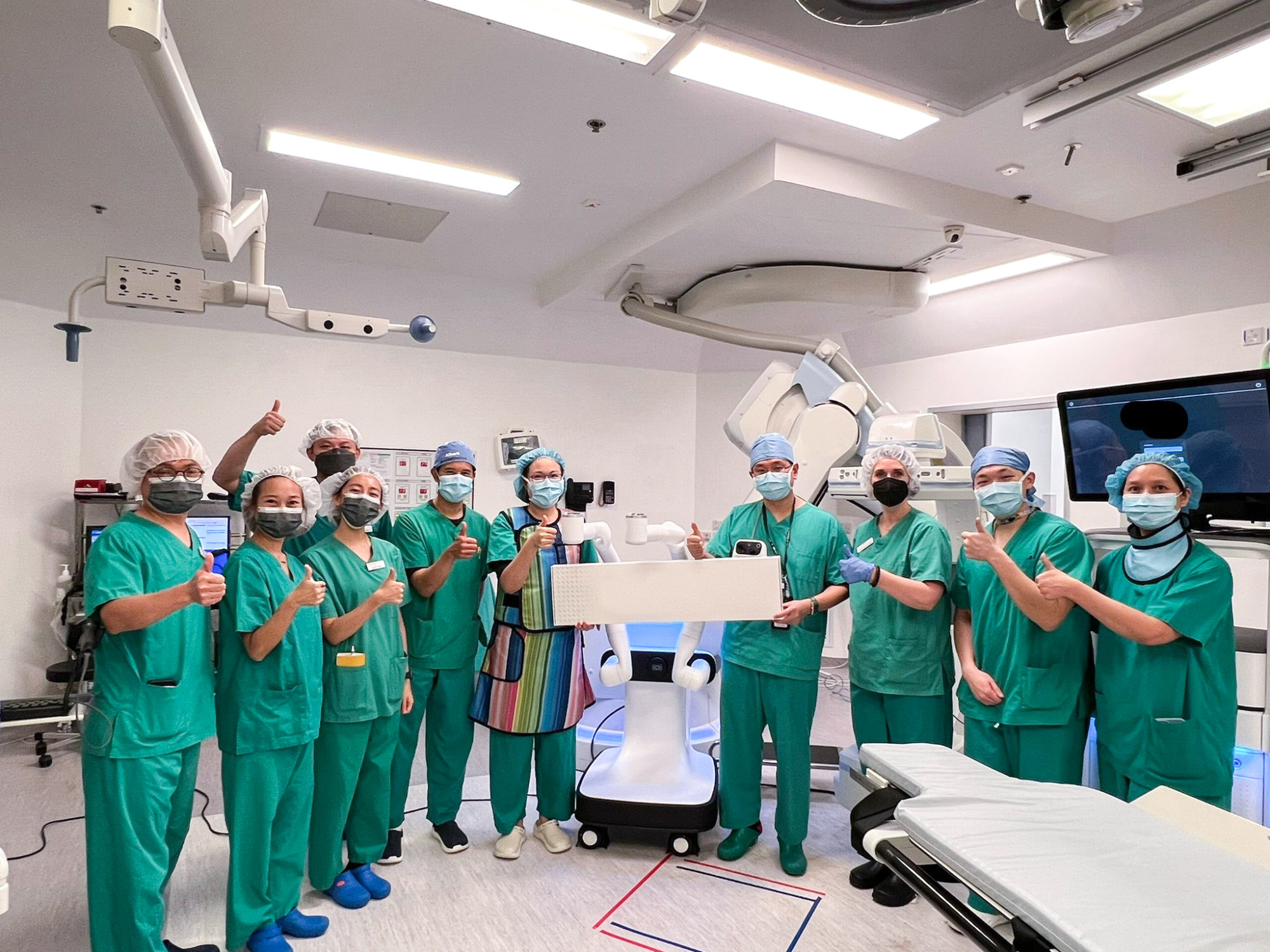
New hope in Hong Kong’s lung cancer fight, as Chinese University team becomes first outside US to perform procedure for early diagnosis
- Robotic-assisted bronchoscopy yields more accurate diagnosis, allowing doctors to access harder-to-reach areas of lung
- Lung cancer is most common form of disease in city, accounting for 26.4 per cent of cancer deaths in 2020
Doctors from the Chinese University of Hong Kong (CUHK) have developed a new procedure for early diagnosis of lung cancer, bringing new hope in the fight against the most common form of the killer disease in the city.
The robotic-assisted bronchoscopy is a new diagnostic procedure for patients with nodules in their lungs, involving the extraction of tissue for further testing.
The CUHK breakthrough marked the first time such a procedure was conducted by an institution outside the United States, with its medical team successfully carrying out the trial on 18 patients since December.

Dr Calvin Ng Sze-hang, a cardiothoracic surgery professor at the university, said the procedure yielded a more accurate diagnosis than conventional bronchoscopy.
“We now have a tool to accurately access tiny and hard-to-reach lung nodules with greater precision than ever before. [This] will allow earlier cancer diagnosis and fewer repeat procedures, potentially saving costs, and ultimately providing a better patient experience and clinical outcome,” he said.
Lung cancer is the most common form of the disease in Hong Kong, accounting for 26.4 per cent of local cancer deaths in 2020. Although long-term smokers are most susceptible, lung cancer has also increasingly affected non-smokers and younger patients over the past decade.
While early diagnosis is key to increasing survival rates, traditional methods have constrained doctors from reaching nodules in peripheral areas within the lung. Current methods also entail invasive procedures which may cause pneumothorax or excessive bleeding in patients, making accurate early diagnosis risky and difficult.
The robotic-assisted bronchoscopy tackles this problem by equipping a mechanical arm used to access the nodule with navigation and imaging functions. Electromagnetic navigation and optic real-time imaging enable doctors to see the location of the surgical device and its distance from the tumour. A real-time image of the tumour allows for a more precise extraction of nodule tissue in peripheral areas of the lung.
The procedure is operated by a remote console, as opposed to controlling the robot arm directly in traditional bronchoscopy. This enhances the stability of the arm inside the patient’s lung.
Pat Chung, a 54-year-old kitchen worker, was among the 18 patients who took part in the clinical trial. A shadow in the upper right corner of her lung from a regular body check sounded the alarm for Chung, who then sought further check-ups.
The robotic-assisted bronchoscopy then formed the next part of Chung’s diagnostic process in late February, alongside a CAT scan. Eleven days after the procedure, Chung received a call confirming that the nodule in her lung was cancerous.
It only took six hours from the start of the procedure to discharge for Chung, with the bronchoscopy itself lasting under three hours. She said she did not notice any adverse effects from the process.
“There was no pain at all [after waking up from anaesthesia]. I could get off the bed and use the bathroom very soon after the procedure,” Chung added.
The novel method has not been formally approved yet by the Hospital Authority to be adopted in Hong Kong’s public health care facilities. However, the university’s medical team said it believed the procedure benefited patients with weak lung function, for whom conventional bronchoscopies would be too risky.

